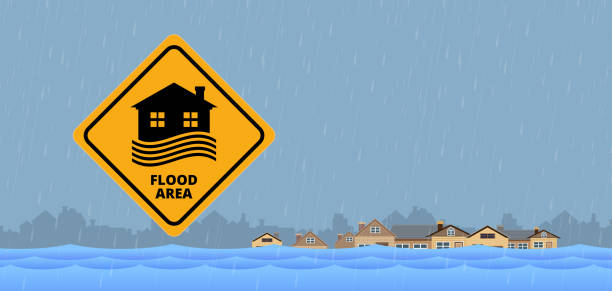Building in high-wind or flood zones comes with unique challenges and risks that require thoughtful planning and execution. As severe weather events become more frequent, construction in flood zones demands increased attention to safety, resilience, and sustainability. Understanding best practices for these areas helps builders and homeowners ensure their structures stand the test of time while reducing potential losses. In this article, we’ll explore key strategies for building resilient homes in high-risk areas, discussing material selection, design approaches, and critical construction standards to follow.
Understanding the Risks in High-Wind and Flood Zones
High-wind and flood-prone areas are often marked by unpredictable weather conditions, which can range from hurricanes and tornadoes to heavy rainfall and rising sea levels. Flood zones are especially vulnerable, as increased precipitation and natural erosion can turn mild weather patterns into major flooding events. For homeowners, these environmental factors mean that traditional building methods may not be sufficient. Instead, designs and materials must be chosen specifically for strength, durability, and adaptability.
Understanding the risk levels for a specific location is critical. The Federal Emergency Management Agency (FEMA) and other regulatory bodies provide flood maps that outline flood zones, which are classified based on their risk of flooding in any given year. Building in these areas requires adherence to strict building codes and standards, often going beyond the basic requirements to ensure additional safety and durability.
Design Approaches for Flood Zones
One of the most critical elements of construction in flood zones is ensuring that the design can handle excessive water exposure. Elevated foundations, for instance, help to protect buildings from floodwaters by raising the structure above the anticipated flood level. This is typically achieved through pilings, stilts, or elevated slabs, which keep the primary living areas safe from floodwaters.
Another effective design strategy is the incorporation of breakaway walls in lower levels, allowing floodwater to pass through without compromising the building’s structural integrity. These walls are designed to break away in high waters, preventing a buildup of water pressure that could otherwise damage the building’s core structure. Ventilation openings can also be installed in flood-prone foundations, allowing water to flow in and out without causing pressure or structural stress.
Flood-resistant building materials are also a must. Using water-resistant materials like concrete, steel, and specially treated wood for critical elements helps prevent mold growth and structural decay after flood exposure. For surfaces and finishes, non-porous options, such as ceramic tiles and epoxy-coated flooring, offer added durability and easier clean-up.
Working with Leading Custom Home Builders
When building in a high-risk area, it’s essential to work with professionals who understand local regulations, challenges, and best practices. Leading Custom Home Builders Ontario have experience in managing these specialized requirements, ensuring compliance with safety standards and employing resilient building techniques. Partnering with experts familiar with the unique needs of high-wind and flood-prone areas allows homeowners to create a safe, sustainable, and attractive home that balances aesthetic appeal with practical durability.
These builders can provide insights into region-specific challenges, from selecting the right flood-resistant materials to implementing architectural elements that withstand extreme weather conditions. This collaborative approach not only meets regulatory requirements but also adds value to the property by increasing its resilience against natural disasters.
Material Choices for Resilience in High-Wind and Flood Zones
Selecting materials for a home in flood zones is one of the most important decisions homeowners can make. High-strength concrete, treated wood, and galvanized steel are materials known for their durability and resistance to both water and wind damage. Concrete, especially when reinforced with steel, is highly resilient, providing solid foundational strength even under extreme pressure.
Steel, used for framing and structural elements, can withstand high winds while maintaining stability in wet conditions. Specially treated wood options are resistant to rot and decay, making them ideal for exposed areas and flood-prone sections of a home. Flood-resistant drywall is also an innovative option for lower levels and basements, offering water-resistance and easier cleanup in the event of a flood.
HVAC and Electrical Systems Considerations
Flood zones require additional considerations for HVAC, plumbing, and electrical systems to prevent damage and reduce risks. For example, placing HVAC units and electrical panels on higher floors or mounting them on elevated platforms can minimize water exposure. Similarly, outlets, wiring, and switches should be installed well above the anticipated flood level to prevent water damage.
Submersible sump pumps, equipped with battery backups, are highly recommended for properties in flood-prone areas. They help manage water intrusion during heavy rains or flooding, reducing the risk of water accumulating in basements or lower levels. Regular maintenance of these systems is also essential to ensure functionality during emergencies.
Landscaping Strategies for Flood and High-Wind Areas
Landscaping can play a significant role in safeguarding properties in high-wind and flood zones. By designing landscapes that manage water flow and reduce erosion, homeowners can protect their homes from potential damage. Native plants with deep root systems help stabilize the soil, reducing erosion and absorbing excess water during floods. Additionally, grading the property to channel water away from the structure can help keep foundations dry and reduce the risk of water infiltration.
For high-wind areas, wind-resistant trees and shrubs provide natural windbreaks that can shield a property from strong gusts. Strategic tree placement around the home not only enhances curb appeal but also serves a functional purpose by reducing wind force and debris impact on the structure.
Conclusion
Building in high-wind and flood zones requires careful planning, specialized materials, and expertise. From elevated foundations to flood-resistant materials and strategic landscaping, these best practices help ensure that homes in high-risk areas are as safe and resilient as possible.

